The necktie has gone from a nearly mandatory accessory to an often-overlooked article. Of course, this change is all the more dramatic because of the position that was once held by the necktie. Today, we’ll try to get to the bottom of why men stopped wearing neckties or, at least, men in general since around here, we definitely haven’t stopped.
Ties in (Recent) History
We’ve already covered the history of the tie in other posts, most notably with our article on the history and evolution of neckwear, and we’ve also talked extensively about the necktie’s cousin – the bow tie – in another post. With the origins of the necktie previously covered, then, we’ll give you the bumper sticker version.
It was originally associated with Croatian mercenaries in the 17th Century; evolved from a Croat into a cravat, and by the 20th Century, into the tie, as we know it today. It’s an article that’s almost synonymous with classic menswear and as ubiquitous as the suit, dress shirt, or leather shoes.
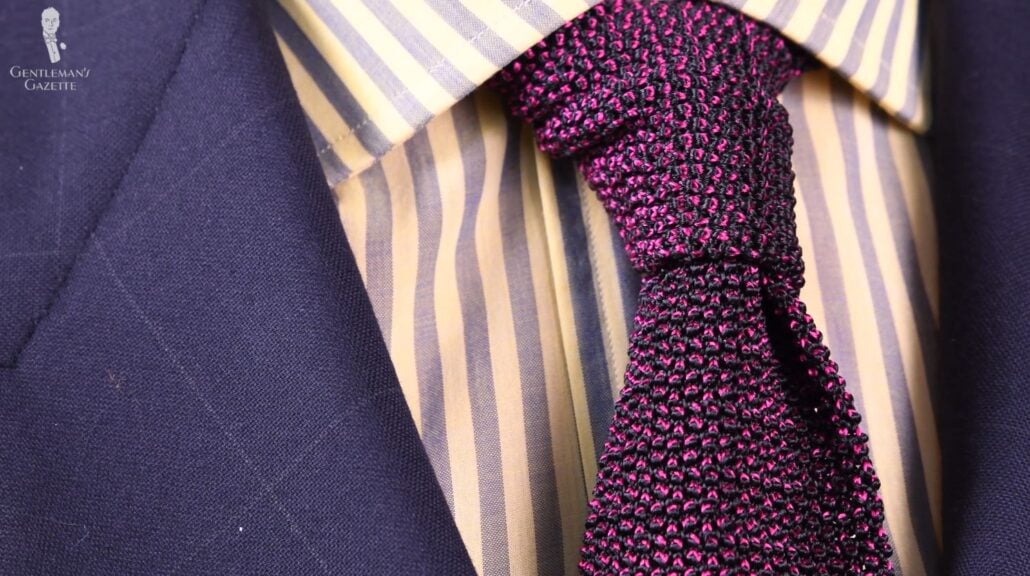
The tie weaved itself into the very fabric of corporate, social, and even romantic life. It was so ingrained with notions of masculine dress that it became the go-to gift for Father’s Day or for any hard-to-shop-for man. And returning to its martial roots, it even became part of some military dress uniforms.
Factors Contributing to the Decline of Neckties:
So, how could ties, having enjoyed such a central position for almost 400 years, declined so rapidly in just a matter of decades? Well, we’ve identified six contributing factors that we’ll share with you today; that should answer this question.
![Yellow Tie Raphael favors wearing ties regularly. [Pictured: Wool Challis Tie in Sunflower Yellow with Green, Blue and Red Pattern from Fort Belvedere]](https://www.gentlemansgazette.com/wp-content/uploads/2022/06/yellow-tie-1030x579.jpg)
By the way, while all of these six factors could also apply to bow ties, we’ll be focusing mostly on long neckties today. If you’d like us to do a similar deep dive on bow ties, just let us know in the comments below.
1. Restrictive Dress Codes
Let’s jump into our list then with the first reason we believe men have largely stopped wearing ties: restrictive dress codes. Somewhat ironically, the once mandatory nature of neckties may have ultimately contributed to their downfall. In the 19th and 20th centuries, in addition to simply being a clothing accessory, ties were also markers of social and class distinction.
Fans of the TV series Peaky Blinders may recall that many of the characters in the show often appear without neckwear and sometimes even without collars as both of these items were fairly expensive at that point in time.
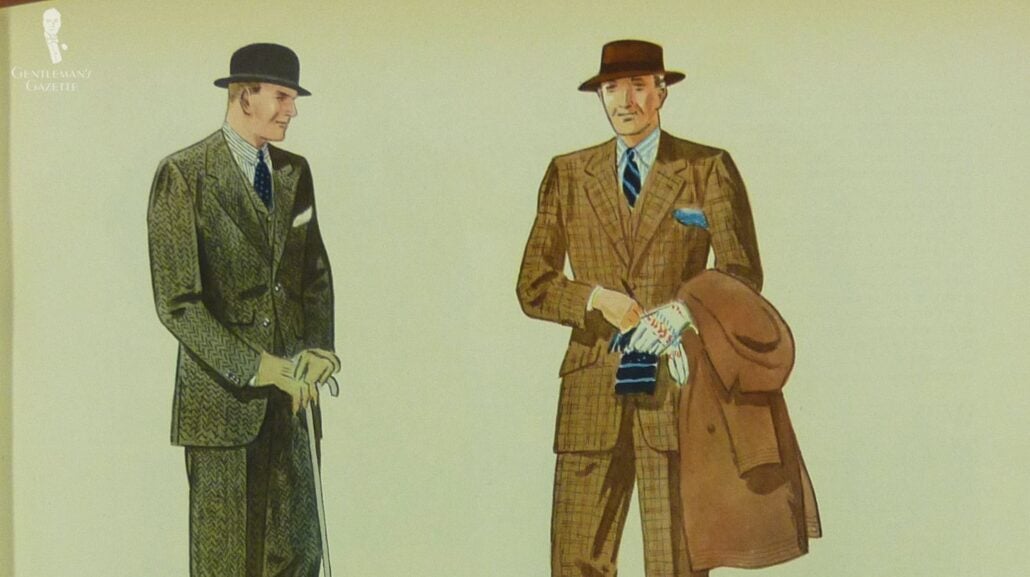
On the other hand, men of means were expected to wear ties and, in turn, those ties were expected to conform to strict, rigidly-enforced dress codes as to what tied designs, materials, and colors were appropriate for individual times and occasions. These origins, then, established some foundational tropes about ties – namely that they were a signifier of one’s financial success, they identified one’s way of making a living, and they were expected to be worn by certain types or classes of people.
2. The Cultural Revolution of the 1960s
As the 20th century progressed, then, all of these factors would contribute to the tie’s undoing. And we’ll get more into this with the second item on our list for today: the countercultural revolution of the 1960s.
For the first half of the 20th century, the tie was regarded as a symbol of the establishment. It was an icon of authority and power worn by magnates who captained industry and made money and by their employees.
![1960S A group of counterculture teens in the 1960s [Image Credit: Elaine Mayes: Summer of Love]](https://www.gentlemansgazette.com/wp-content/uploads/2022/06/1960s-1030x580.jpg)
But, as we discuss in our video on what men really wore in the 1960s, the seismic social and political changes of that decade rocked menswear to its core as well. Disaffected by the inequality, prejudice, and materialism of their world, counterculture and subculture figures rebelled against the values and ethics of authority figures and this included rebelling against icons of the establishment like the tie.
Many popular figures stopped wearing ties entirely, preferring more creative or expressive neckwear. These would include the cravats and ascots of the Peacock Revolution, as often seen on musical group Procol Harum.
![The Evolution Of Neckwear &Ndash; From Scarf To Tie &Amp; Why We Wear Ties Today Musician Chris Copping, pictured here as a member of Procul Harum in 1975, wearing a boldly striped ensemble. [Image Credit: Jim Summaria/Wikimedia Commons]](https://www.gentlemansgazette.com/wp-content/uploads/2022/06/Musician-Chris-Copping-pictured-here-as-a-member-of-Procul-Harum-in-1975-wearing-a-boldly-striped-ensemble.-1030x708.jpg)
Counter-cultural figures didn’t represent the entirety of the population, of course, but their attitudes toward neckwear would snowball and grow throughout the culture at large as time went on.
3. The Rise of Business Casual
While the hippies, beatniks, and spiritualists were mocking the corporate shills with chains (i.e ties around their necks), changes were also taking place in the corporate sphere.
After World War II, casual wear, worn mostly on the weekends at first, was becoming a mainstay of Western fashion, especially in North America. Eventually, this desire for more casual clothing crept into offices; first as an advertising stunt in the 1960s to encourage men to wear Hawaiian shirts to the office on what became known as “Aloha Fridays.” This would eventually morph into what we now know as the “business casual dress code,” and, tellingly, ties are optional.
![Printed Shirts A 1951 Whitmont Hawaiian Shirts ad [Image Credit: Vintage Dancer]](https://www.gentlemansgazette.com/wp-content/uploads/2022/06/printed-shirts-1030x579.jpg)
And even within office cultures, the perception around ties began to change. Ties were something that could be slipped on before a big meeting, but they were fundamentally unnecessary and something of a nuisance to many men. And like a stuffy jacket, ties were meant to be removed or at least loosened when serious work was being done.
Business Casual Men’s Attire & Dress Code Explained
4. An Increasingly Casual World
While counter-cultural forces rejected the tie as an emblem of “the man” and businesses were willing to jettison what was increasingly viewed as a superfluous accessory, the rest of the world was being swept along on a wave of casualization, sparked primarily by notions of comfort and convenience.
Especially in the 1980s and 1990s, the clothing market emphasized perceived comfort over all else. The implication was that, when one wasn’t required to dress up, the default should be that they should basically dress down. Baggy trousers, plush, loose flannels, and even undergarments were held up as clothing that was comfortable to wear and, therefore, the “best type” of clothing.
![90S Ads Ads showing men in the 1990s donning baggy trousers [Image Credit: Newstock (left) and Matthew Valencia (right)]](https://www.gentlemansgazette.com/wp-content/uploads/2022/06/90s-ads-1030x578.jpg)
A greater emphasis on perceived speed and efficiency in daily life also hurt the tie as it was just one more thing to worry about when rushing to get out the door in the morning because we’re all just so busy, right?
Also, when changing outfits at places like the gym, ties could be easy to forget or misplace. In effect, ties were coming to be seen as a relic from the past that was ill-suited to the needs of the present day.
By implication, then, they were also becoming associated with stuffy, ill-fitting, constrictive clothing. After all, a tie is literally a length of fabric knotted around your neck and that just didn’t sit well with these modern notions of casual fashion.
5. Tie Fashion Trends
Like any other item of clothing, then, ties are also victims of fashion and, in particular, trendy fashion. While the conventional tie styles of the golden age of menswear – with their rich colors and regular patterns – were abandoned as being boring in the 1960s and 70s, ties with psychedelic patterns or made from new materials like leather became very modish as they were the perfect subversion of the “stuffy tie” ethos.
In Great Britain, in particular, extremely wide, so-called, “kipper ties” became popular. This style was first popularized in the 1940s as a rebellion against wartime rationing but surged back to popularity again in the late 50s through the 70s.
![A Wide Kipper Tie As Seen In 1953 They Would Come To Prominence Again This Time Ironically In The Late 1960S. A wide kipper tie, as seen in 1953; they would come to prominence again (this time ironically) in the late 1960s. [Image Credit: Bill Whittaker/Wikimedia Commons]](https://www.gentlemansgazette.com/wp-content/uploads/2022/06/A-wide-kipper-tie-as-seen-in-1953-they-would-come-to-prominence-again-this-time-ironically-in-the-late-1960s.-1030x929.jpg)
These ties were loud, colorful, and extremely broad; sometimes up to 5 inches or 13 centimeters in width. Essentially, they were meant to ironically embody everything that was wrong with conventional ties.
The 1980s saw another wave of unusual ties with perhaps the best remembered being the bold “power tie.” As you’ll see in our review of the menswear in 1987’s Wall Street, these ties are intended to showcase one’s wealth and, presumably, dazzle your enemies with the tie’s brilliance and silky sheen.
![Power Tie A striped Giorgo Armani "power tie" [Image Credit: Aldo Fallai]](https://www.gentlemansgazette.com/wp-content/uploads/2022/06/power-tie-1030x578.jpg)
![Piano Tie One of the popular ties in the 1980s - a piano key tie [Image Credit: 2 Brothers Unlimited]](https://www.gentlemansgazette.com/wp-content/uploads/2022/06/piano-tie-1030x529.jpg)
The 80s also featured ironic takedowns of the tie, such as with the piano key necktie. This one likely became popular because of its bold coloring and strong horizontal lines, as well as the increased use of synthesizer keyboards in popular music.
The 80s also saw a fascination with other novelty ties like these zany, fish-shaped ties by designer Ralph Marlin. By the way, these ties had an equally zany commercial.
But, the 90s did give us those shiny watercolor ties and, by the 2010s, everything had gotten extremely skinny, including ties, reviving a trend that had already come and gone several times over. As if just one round of skinny jeans wasn’t enough.
![Fish Ties A collection of Ralph Marlin fish ties [Image Credit: Laughing Whitefish]](https://www.gentlemansgazette.com/wp-content/uploads/2022/06/fish-ties-1030x574.jpg)
The point we’re trying to make here is that trendy tie fashion so closely associated particular types of ties with particular eras, that all of these fads would become almost immediately dated. This led to the perception that all ties would have a shelf life. And why would you want to invest in a quality tie if it was just going to seem dated in a few years’ time?
15 Men’s Style Trends We Hope Die Forever!
6. Popular and Media Perception of the Tie Today
Having brought ourselves up to the present day then, we’re now able to understand the various factors that have gone into modern perceptions of the necktie; many of which are constantly reinforced by popular media. This brings us to our sixth and final point: popular and media perceptions of the tie today.
Returning to our original point about ties and power dynamics, ties were traditionally associated with men who ran businesses or nations. But, because of the implications of classism, inequality, or just being out of touch, many politicians are now forgoing ties whenever they can.

And in the business world, venture capitalists and go-getters in the industry are now more commonly associated with casual fashion styles that eschew the tie and the corporate culture that it represents.
Ties have unfortunately become associated then with middle management, pencil-pushing types, who have to continually run the rat race in business. And hip young professionals are often ignoring ties altogether or trying to wear them in an ironic way.
So, ties are either consigned to the 9-5 daily grind or used as an obvious attempt to impress others. Effectively then, the tie has become a symbol of constraint and artifice pitting the mundane, money-making, overworking, corporate world against the genuine, fun, joyous world of comfort and free time that we’re all secretly daydreaming about.
It’s something that you’re bound to have seen in the media so many times that it’s actually become a real part of many people’s lives. As soon as you get home from a long and taxing day at work, what’s the first thing you’re supposed to do? Remove your tie as that first step into the world of comfort and relaxation.
To some extent, modern tie-wearing culture can be blamed for this. Just think about all the times that we’re still commonly expected to wear ties today, like funerals, important business meetings, or fancy ceremonies like weddings. Not only do most people dislike feeling obligated to wear particular clothing, but it’s also hard to find the joy in wearing a tie when it’s so closely associated with tedious, boring, or even sad events and functions.
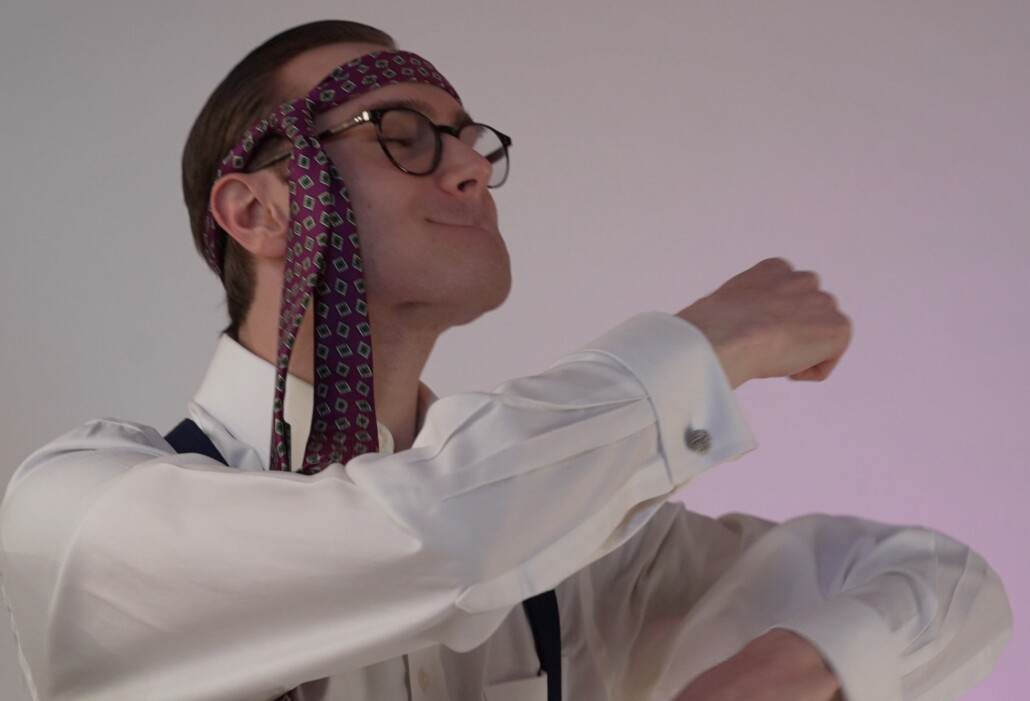
And even for weddings when you can look forward to fun and excitement, the convention always seems to be that the real fun begins at the reception when ties are loosened, removed, or worn “Rambo-style.”
Overall, then, it can be said that men today – at least, in general – are dressing more specifically for themselves than for others with whom they might be sharing an occasion.
Our Take on Ties
The purpose of today’s article is not to bemoan the decline of tie-wearing and we do firmly believe that men should be able to dress for themselves. But, as with everything in life, there are limits. In many ways, as we also concluded in our post on whether or not the suit is dying, stylish dress is better for all when we each have a choice.
In other words, we’d rather see just one gentleman dress up and wear a tie because he wants to, rather than seeing a hundred gentlemen wearing ties when they feel like they have to. It is a good thing that ties are no longer effectively mandatory to be considered a respectable person, and it’s also a good thing that men have increasing freedom to wear what they want when they want.
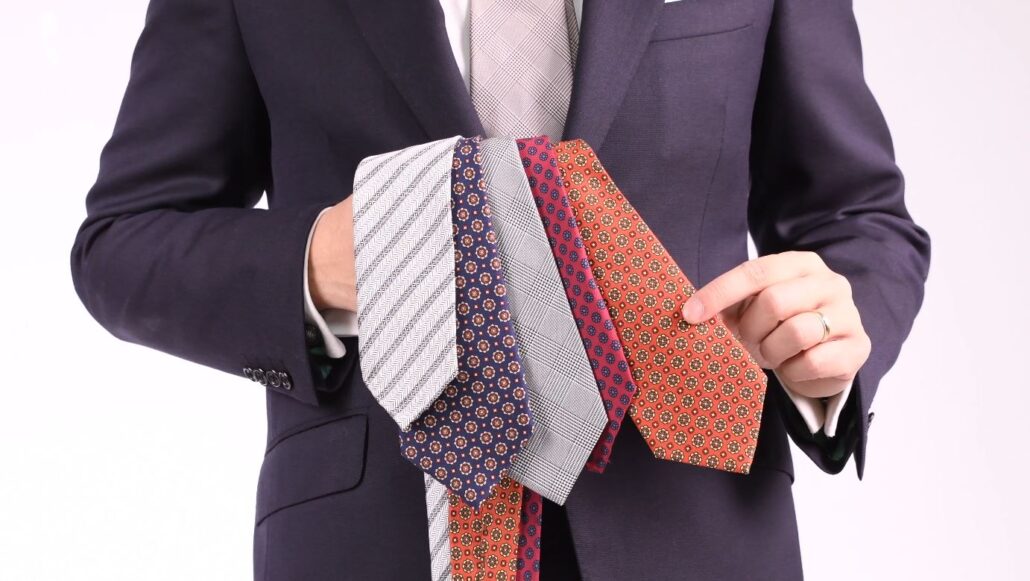
Ties, however, don’t have to be a casualty of these attitudes and changes. If you love classic style as we do here at the Gentleman’s Gazette, then ties will undoubtedly spark excitement for you as a way to creatively express yourself.
And, of course, there are still some circumstances where a tie really should be worn as a matter of respect for the occasion and the other people present. This shows not only that you’re aware of other people’s feelings toward a given event, but also that you have put effort toward those feelings. Remember that, to a reasonable degree, caring about what other people think of you is not a sign of weakness; it’s a sign of respect.
Dovetailing into our last point, then, it should come as no surprise that we here at the Gentleman’s Gazette think that ties are a supremely versatile and creative way to accent your outfits. You can personally express yourself through the color, texture, and pattern of ties that will make you feel confident and creative, not confined or constricted.
My Necktie Collection (Sven Raphael Schneider’s Ties)
Outfit Rundown
Today, I am, of course, wearing a tie as the central element of my outfit. It’s a relatively new addition to our Fort Belvedere shop; an extension to our line of jacquard weave, diamond pattern ties. The base of the tie is in a magenta shade featuring elements of both purple and pink, and its repeating diamonds are in off-white and green.
I’ve tried to incorporate these colors elsewhere in my outfit as well, such as with my triple clove boutonniere in magenta and my pale pink, linen pocket square with pink X-stitching. Furthermore, my socks are our two-toned, shadow-striped models in dark green and purple.
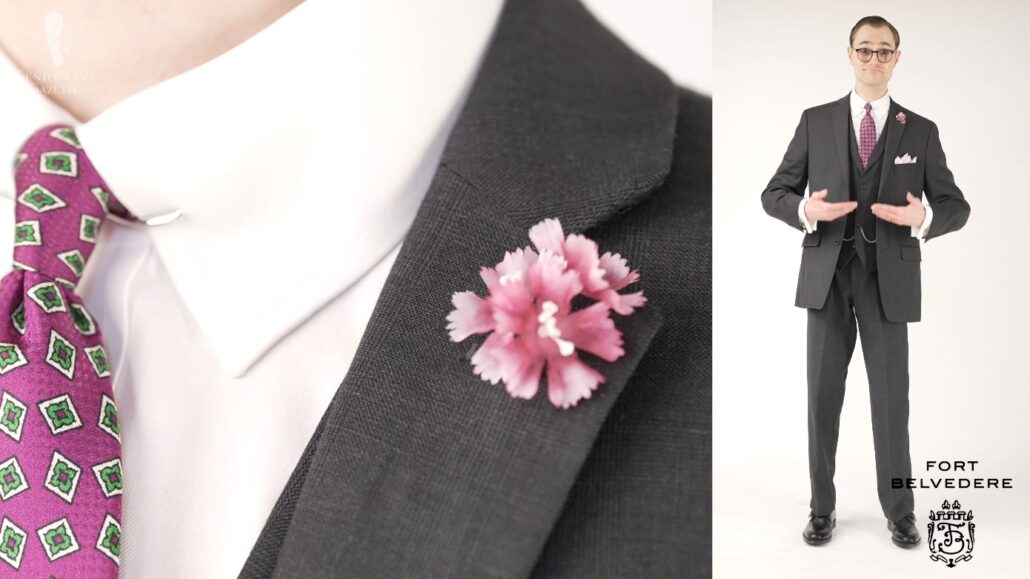
To balance out these bolder colors then, the rest of my outfit is simply in the grayscale today. We’ll start with my plain white shirt, which has French cuffs, into which I’ve inserted our platinum-plated, sterling silver monkey’s fist knot cufflinks. I’m also wearing a collar clip in silver to accent my tie knot.
Other silver accessories include my pocket watch and chain and the buckles on my black monk strap shoes. And, of course, my three-piece suit is in dark charcoal gray and features a slight pattern and texture to its weave – though it reads as a solid overall.
You can find all of the Fort Belvedere accessories I’m wearing, along with a host of other designs, in the Fort Belvedere shop.
Do you think the necktie is dying? Share your thoughts in the comments section!
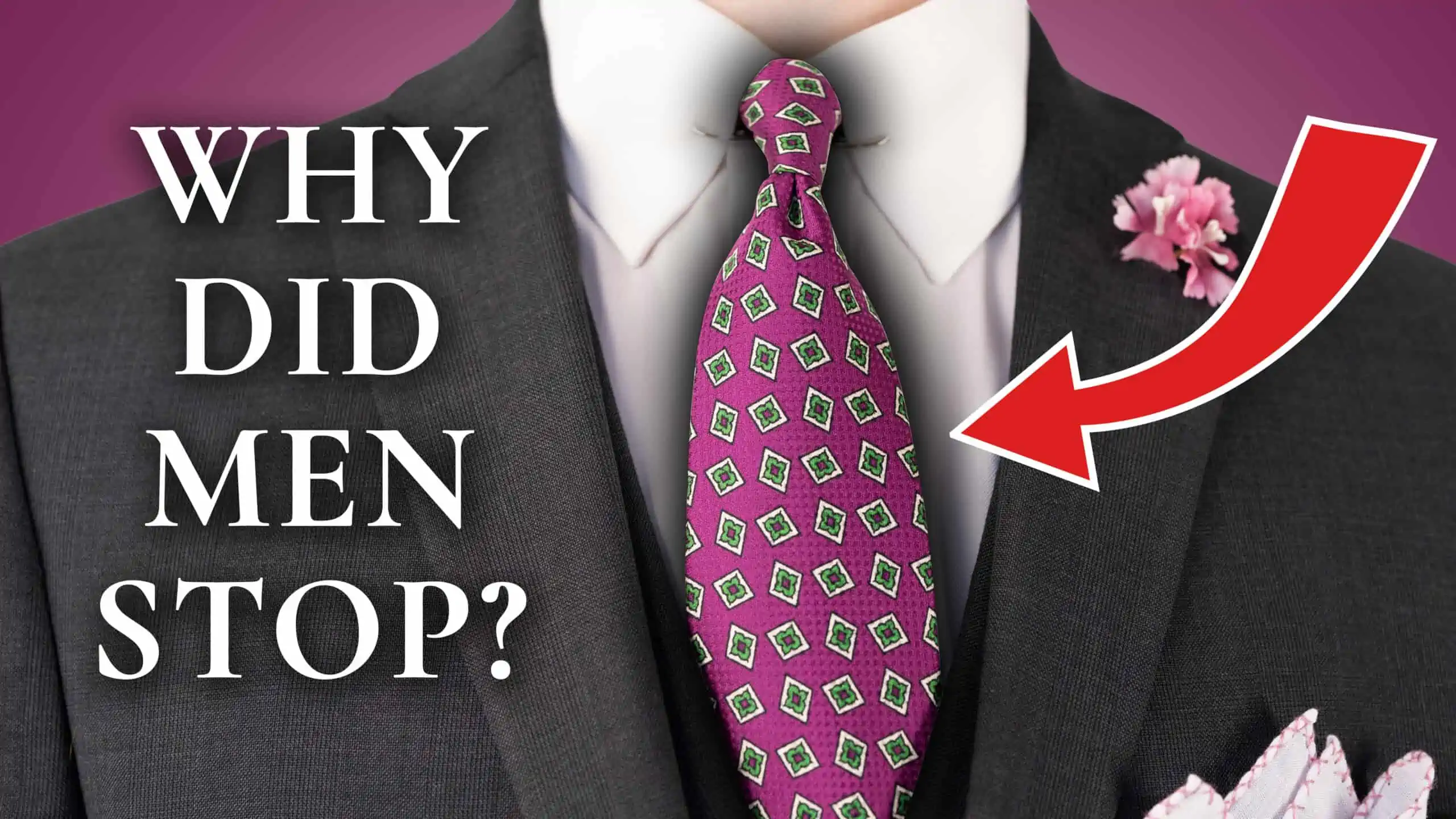
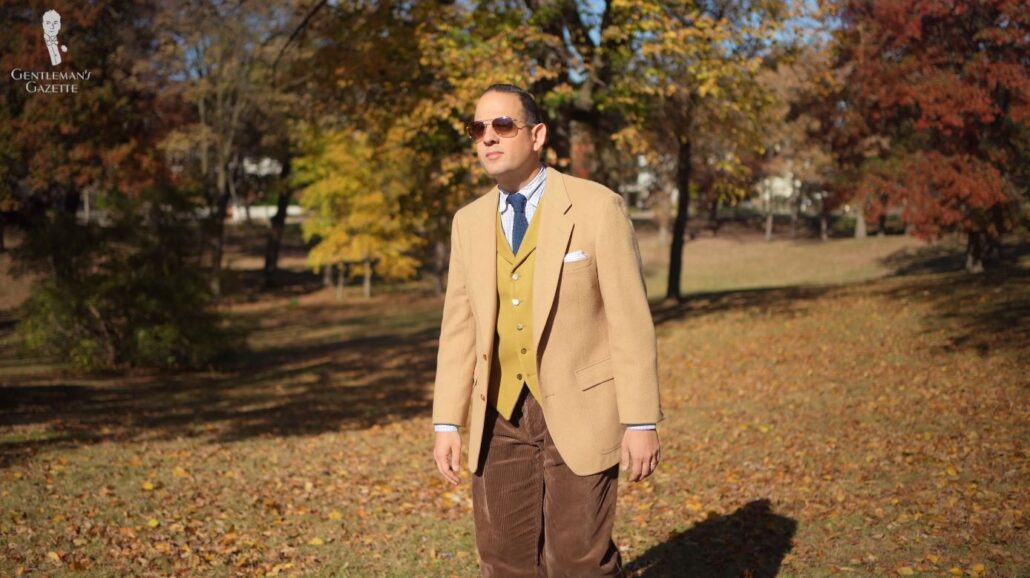
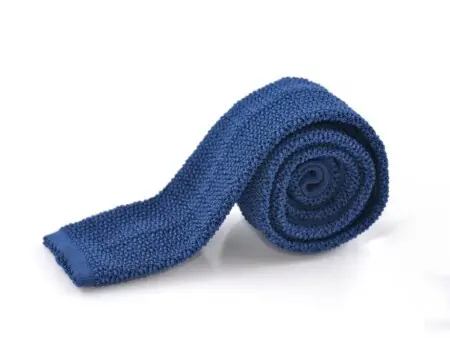
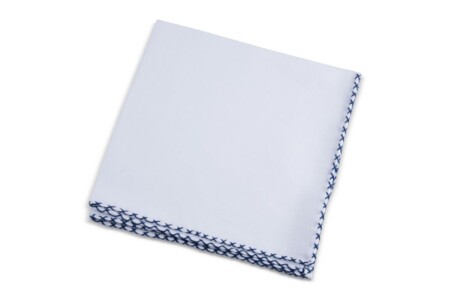
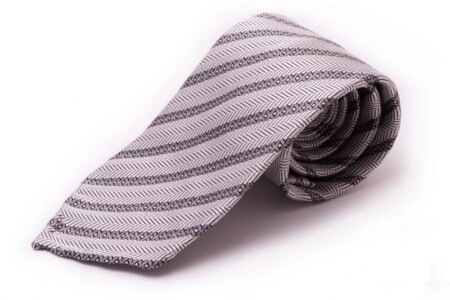
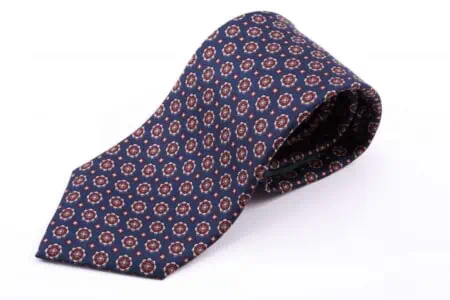
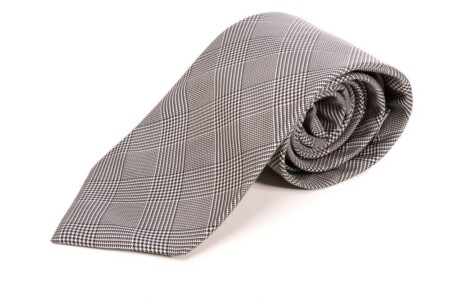
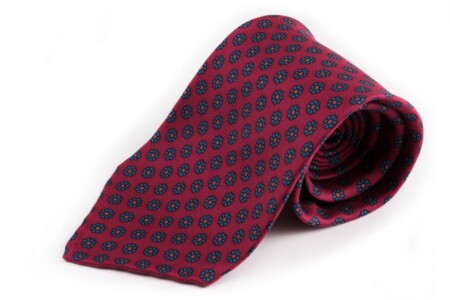
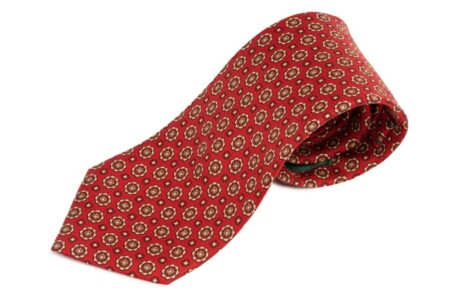
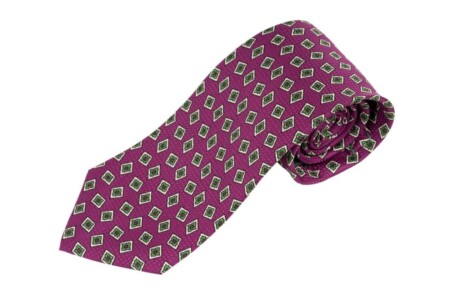

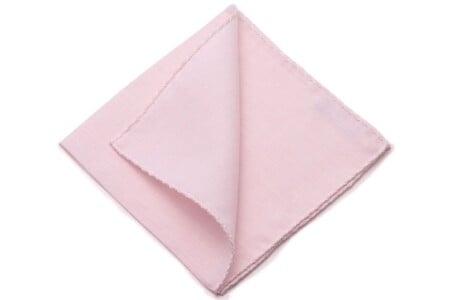
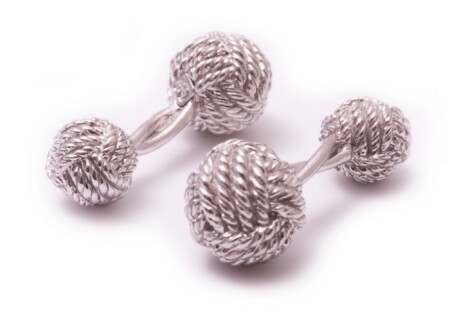
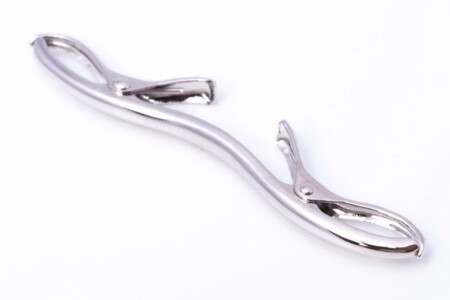
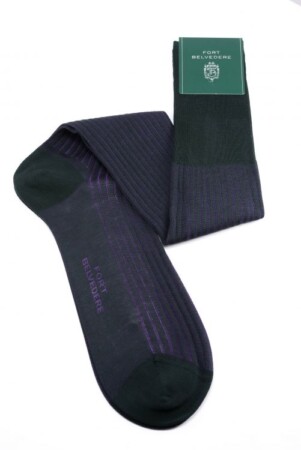
Looking forward to the end of summer so that I can stop wearing the polos, t-shirts, and khaki shorts that are more appropriate for a child, and start dressing like an adult again, welcoming back my tweed jackets, navy blazers, and grey flannel trousers–but most of all, the finishing touch: my neckties.
“dressing like an adult …” Say no more, Jordon!!!
Where does it say that one has to live in shorts and t-shirts over summer? While tweeds and flannels aren’t appropriate for warm weather, there are more stylish options for summer than shorts and t-shirts that can even be more cooling. Linen/cotton-linen blend or seersucker trousers, poplin fabric shirts, tropical wool trousers, etc.
Agreed, and neither does one need to abandon ties in the summer months, as an unlined grenadine tie is both breathable and sharp.
I would add one factor that I have seen while working in technology on the west coast. Lets call it the “revenge of the nerds.” The tech sector represents ridiculous financial success yet is populated by many folks who are, frankly, geeky and clueless about style—and proud of it. Witness Mark Z at Facebook and his famous hoodie sweatshirt. I see these guys at the super market wearing their pajamas and wearing t-shirts and shorts at nice restaurants. I guarantee you that most of them couldn’t tie a tie if their lives depend on it, but they are certainly a template for a kind of financial success and their studied slovenly casual style is their own status symbol.
To add to Preston’s list of six factors, I think the plethora of tie knots are confusing for many men. I believe that if there was only one or two main tie knots, wearing ties would be more common.
For most men I know, there is only one way of tying a tie: the four hand knot. The exception being those who’ve served in branches of the armed forces where (in Australia) Windsor knots are compulsory.
An interesting point, Roland. I can understand how someone who wants to start wearing ties can be overwhelmed with choices when looking to learn a tie knot online. There are certainly many extravagant ones out there!
I would love to see a deep dive on bow ties. I feel like they’re (while still not as common as in previous eras) holding a place as casual backward and seen as less stuffy than long neckties.
I’ve got a few bow ties, but only started to wear then recently. Here in the east coast of the United States, they are pretty rare, which is part of why I like them. They also are very practical in that they stay out of the way better than a necktie. Popular perception is that they are difficult to tie, which IMO they are not, although I am still developing my signature imperfect tying method.
So true Crazy Dave,
I just started wearing bow ties as well. The reason I didn’t start sooner was my perception of the difficulty in tying one. Come to find out, it’s much easier to do than it looks. I work at a place where I’m constantly in motion. Even with a tie bar, my neck tie can get in the way. The bow tie eliminates this issue.
There’s always our definitive guide to “tie”d you over…I’ve been spending too much time with Preston and his puns!
There was a time when dressing properly was part of the definition of a gentleman.
Now, people can’t even agree on what ‘properly’ and ‘gentleman’ mean.
True story: At a high level meeting in Toronto’s financial district, a gentleman from ‘up north’ was seeking a loan and appeared rather uncomfortable with the seemingly complex process when another banker arrived at the meeting and recognized the gentleman’s was given to graduates of Harvard Business School. As soon as he complimented the gentleman in his tie the tone of the negotiations immediately changed. It seems ties do have significance in unpredictable ways!
I like ties and wear them even though I work in a business casual office; however, I wore a tie to my high school reunion recently and it seemed to make everyone uncomfortable. My guess is that a lot of men who dress casual are not doing it with confidence and so they are easily made to feel underdressed in the face of a jacket and tie.
I would have left that reunion. Period.
I take it from your comment that it was the casually dressed guys who didn’t approve of your tie, not necessarily also the women at the reunion? As a straight man, I care vastly more what women think, and ties have never fallen from favour among the sort of women whose opinion I’d value.
I had the same experience at my reunion. Most of the guys were intimidated by me wearing a tie and wouldn’t talk with me. The women in the other hand wanted to talk with me and know how I became successful. Much to the dismay of my wife.
It appears to me that men’s ties are going the way of women’s gloves. When my grandmothers went anywhere vaguely dressy, they wore gloves, it was considered a necessary accessory, as were hats. All gone, except in yellowing photos (which I treasure). Most men and women today look uncomfortable, and behave awkwardly when they have to dress-up, meaning ties, high heels, hats, etc. I see young women wobbling on high heels, and young men looking as though they raided dad’s closet, twitching and chaffing with an outfit alien to their lifestyle. Time marches on.
Ties will always be around in one form or another for ceremonies and events.
Anytime there is a distinct fashion trend, look for a counter trend among the younger generations. It could happen and it may involve a completely new way to use a tie.
Have you noticed to omnipresent bandana in the look books. They look trashy to me but there they are.
Look to the young!
Growing up during the 50’s and 60’s, I would never have guessed that I could one day become a “rebel” by dressing up as my Ivy League father always did.
I’ve been to both weddings and memorial/funeral services in recent years, and seen grown men, many of them over 35, in jeans, hoodies, t-shirts, polos, and cargo shorts. Tragic.
Unfortunately nowadays for 75-80% of the population ‘dressed up’ seemingly means jeans and a hoodie with closed shoes instead of sweatpants and hoodie (cooler months) or shorts and t-shirt (warmer months) with thongs on their feet.
Interesting article. The points are well, on point. :)
As someone that has been asked in interviews if I own jeans, that used to work in the office who now works from home and still chooses to and prefers to traditional business attire, but doesn’t always wear a tie, I have noticed over the years how people react to my attire, especially when I wear a tie. It’s become a rather unexpected garment, but I think they are awesome, so I’m going to keep on doing so. Heck I even started to embrace bowties. Go ties go!
While I respect people’s choice to wear what they want, I do hope that this trend of increasing casual attire does not get to the point of completely relegating all traditional attire to the back of the closet or to not be in the closet anymore.
Keep up the great articles guys.
Stay safe and stay awesome.
Gerry :)
Gerry,
How terribly American of you to “respect people’s choice to wear what they want”.
Just like Americans’ respecting people’s choice to believe whatever they want.
We Europeans believe that respect must be earned, must be deserved.
Unless there was a specified dress code, I don’t know why anyone would care. I think you are right about lack of confidence, but I would not have left the reunion. If someone doesn’t like how I’m dressed, that is their problem!
I couldn’t agree more with the sentiments of this article! For me, wearing a tie isn’t a constraining obligation but something I actively look forward to and derive great pleasure from. They’re also eminently practical, covering up any rumpling of one’s shirtfront that might happen over the course of the day.
I think ties were eventually most often worn by salesmen and others giving sales presentations (including me), so one sadly began associating ties with being phony and manipulative….
I plan to wear ascots to hide my skin with casual shirts, possibly including polos.